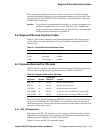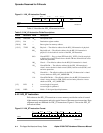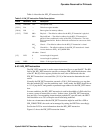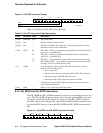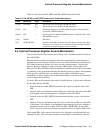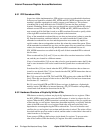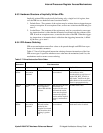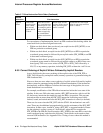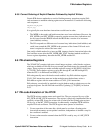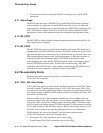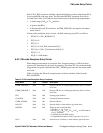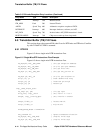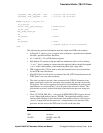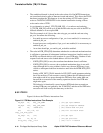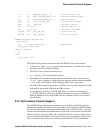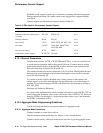Alpha 21264/EV67 Hardware Reference Manual
Privileged Architecture Library Code 6–11
PALshadow Registers
6.5.6 Correct Ordering of Explicit Readers Followed by Implicit Writers
Certain IPRs that are updated as a result of faulting memory operations require PAL-
code assistance to maintain ordering against newer instructions. Consider the following
code sequence:
HW_MFPR IPR_MM_STAT
LDQ rx,(ry)
It is typically the case that these instructions would issue in-order:
• The MFPR is data-ready and both instructions use a lower subcluster. However, the
HW_MFPRs (and HW_MTPRs) respond to certain resource-busy indications and
do not issue when the MBOX informs the IBOX that a certain set of resources
(store bubbles) are busy.
• The LDs respond to a different set of resource-busy indications (load-bubbles) and
could issue around the HW_MFPR in the presence of the former. PALcode assis-
tance is required to enforce the issue order.
One totally reliable method is to insert an MB (memory barrier) instruction before the
first load that occurs after the HW_MFPR MM_STAT. Another method would be to
force a register dependency between the HW_MFPR and the LD.
6.6 PALshadow Registers
The 21264/EV67 contains eight extra virtual integer registers, called shadow registers,
which are available to PALcode for use as scratch space and storage for commonly used
values. These registers are made available under the control of the SDE[1] field of the
I_CTL IPR. These shadow registers overlay R4 through R7 and R20 through R23,
when the CPU is in PALmode and SDE[1] is set.
PALcode generally runs with shadow mode enabled. Any PALcode that supports
CALL_PAL instructions must run in that mode because the hardware writes a
PALshadow register with the return address of CALL_PAL instructions.
PALcode may occasionally be required to toggle shadow mode to obtain access to the
overlayed registers. See the PALcode restriction, Updating I_CTL[SDE], in Section
D.32.
6.7 PALcode Emulation of the FPCR
The FPCR register contains status and control bits. They are accessed by way of the
MT_FPCR and MF_FPCR instructions. The register is physically implemented like an
explicitly written IPR. It may be written with a value from the floating-point register
file by way of the MT_FPCR instruction. Architecturally-compliant FPCR behavior
requires PALcode assistance. The FPCR register must operate as listed here:
1. Correct operation of the status bits, which must be set when a floating-point
instruction encounters an exceptional condition, independent of whether a trap for
the condition is enabled.
2. Correct values must be returned when the FPCR is read by way of a MF_FPCR
instruction.



